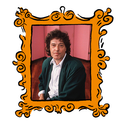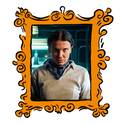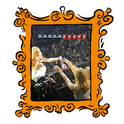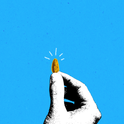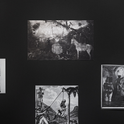We’re wise enough to know that artists owe their inspirations to more than just their great, individual genius. Rather, and in lieu of the society they often set themselves against, they have depended just as much on the close company of those who get it. These people might be friends, family or romantic partners—but, more likely than not, they will often also be artists.
The premise of this new exhibition at the Pallant House Gallery in Chichester is straightforward: it is a showing of portraits of British artists as painted by other British artists. But from this simple conceit we get a fascinating glimpse of what feels like the whole living world behind British art as it stretches back the best part of a century. We see, in a continuum with surprisingly few gaps, how Harold Gilman painted Sylvia Gosse; and how she painted Walter Sickert; and how Roger Fry painted Nina Hammett and Hammett painted Fry; and then how Sickert painted Hammett; and so on and so on, up to the present day, with wonderful and often surprising results. (If a photograph of Peter Blake and Howard Hodgkin looking gormless at Disneyworld doesn’t make you smile, what will?)
It would be easy, in a show like this, to reduce art to the self-indulgent byproduct of a small coterie of insiders, yet the curators have been smart enough not only to avoid this pitfall but to achieve its opposite: well-known portraits of Francis Bacon by Lucian Freud and their Colony Club ilk are in attendance, yes, but also so much more. Some names here will be vaguely known—such as John Minton and Winifred Knights—while others will be completely new, such as Seóirse Macantsionnaigh. The recursive subject-and-sitter nature of the portraits grants these more obscure names a place among their better-known peers, embedding them within the wider story of British art. In fact, if art can ever be adequately summarised within national boundaries, it would be as it is explored here: a network of particular bonds, both platonic and romantic, that particular artists have made with each other across particular places, circumstances and generations.
Suddenly the first portrait becomes less an act of voyeurism and more a study in mutual intimacy
Another unexpected thing about the exhibition is how it gives us different ways to think about how an artist relates to their sitter. When the beholden is equally as capable of returning everything the beholder can throw at them—which they often do, either in revenge or tribute—the resultant paintings take on an altogether different aspect, both offering meaning that the other could not give alone. Lucian Freud paints Celia Paul sleeping and Paul paints Freud sleeping, each in a similar posture; suddenly the first portrait becomes less an act of voyeurism and more a study in mutual intimacy. Likewise, Maggi Hambling’s grotesque portrait of her friend Sarah Lucas from 2013—an angry, ogrish, smudgy face hung almost incidentally next to a swirling pile of smouldering rubbish—makes Lucas’s retort even funnier: Maggi (2018) is just two bare light bulbs hanging above a toilet suspended in the air, the “face” of a literal potty mouth. On other occasions, of course, this dialogue strikes a darker note. You do not have to know that the marriage between John Bratby and Jean Cooke was unhappy before you see it in their respective portraits.
Yet while antagonisms and rivalries are inevitable between any creative practitioners, it’s also obvious that the most nourishing relationships an artist can foster are with fellow artists who also happen to be very, very good friends.
In a set of double portraits commissioned exclusively for the exhibition, we see the artists Chantal Joffe and Ishbel Myerscough as they see each other: indispensable. In Joffe’s portrait the pair stand side by side in their high-waisted tights and underwear, gawkish, simultaneously young and old, with their awkward body language and grinning faces. In Myerscough’s portrait the two are seen in photorealistic detail, each faced self-consciously towards the other with brushes in hand, painting the other into existence. Since the two met as students at Glasgow School of Art, they have remained the closest of friends. Alongside these portraits are a selection of birthday cards the two have drawn for each other over the years; also included is a snapshot of a painting by Myerscough of the two of them eight months pregnant. How heartening to be witness to such an enduring friendship—not least because it helps us realise that friendship can enrich art as much as art can enrich us all.
Seeing Each Other: Portraits of Artists is on display at Pallant House Gallery, Chichester, until 2nd November


